Discover 20 hidden attractions, cool sights, and unusual things to do in Trier (Germany). Don't miss out on these must-see attractions: Porta Nigra, High Cathedral of Saint Peter, and Kaiserthermen. Also, be sure to include Liebfrauenkirche in your itinerary.
Below, you can find the list of the most amazing places you should visit in Trier (Rhineland-Palatinate).
Table of Contents
Porta Nigra

Towering stone Roman gate. The Porta Nigra is a large Roman city gate in Trier, Germany. It is today the largest Roman city gate north of the Alps. It is designated as part of the Roman Monuments, Cathedral of St Peter and Church of Our Lady in Trier UNESCO World Heritage Site.
The name Porta Nigra originated in the Middle Ages due to the darkened colour of its stone; the original Roman name has not been preserved. Locals commonly refer to the Porta Nigra simply as Porta.[1]
Address: Simeonstrasse 60, 54290 Trier
High Cathedral of Saint Peter
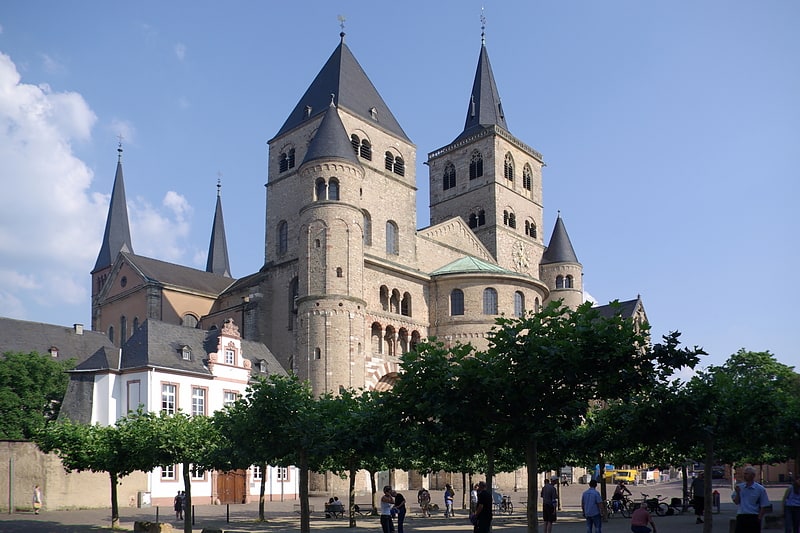
Also known as: Trierer Dom
Fortress-like cathedral founded in 1035. The High Cathedral of Saint Peter in Trier, or Trier Cathedral, is a Roman Catholic cathedral in Trier, Rhineland-Palatinate, Germany. It is the oldest church in Germany and the largest religious structure in Trier, notable for its long life span and grand design. The central part of the nave was built of Roman brick in the early fourth century, resulting in a cathedral that was added onto gradually in different eras. The imposing Romanesque westwork, with four towers and an additional apse, has been copied repeatedly. The Trier Cathedral Treasury contains an important collection of Christian art. In 1986 the church was listed as a UNESCO World Heritage Site, as part of the Roman Monuments, Cathedral of St. Peter and Church of Our Lady in Trier.[2]
Address: Liebfrauenstraße 12, 54290 Trier
Kaiserthermen
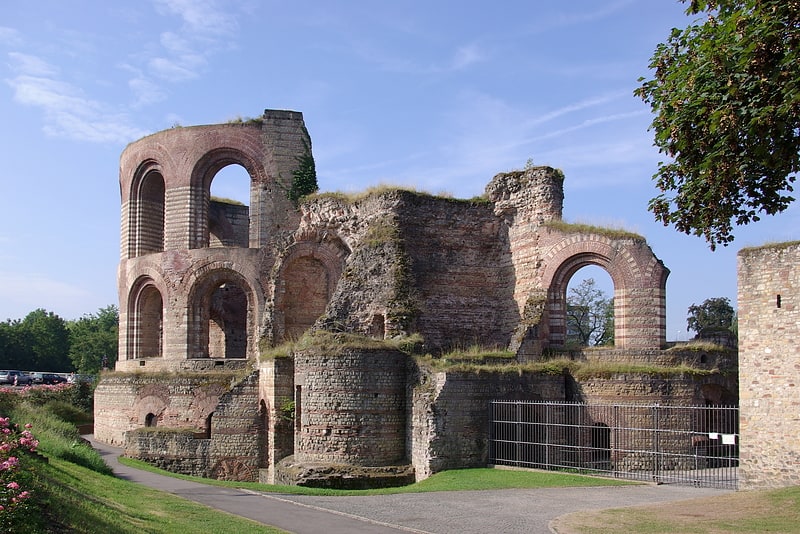
Historical landmark in Trier, Germany. The Trier Imperial Baths are a large Roman bath complex in Trier, Germany. It is designated as part of the Roman Monuments, Cathedral of St. Peter and Church of Our Lady in Trier UNESCO World Heritage Site. It was constructed in the 4th century AD. The baths were never completed and were made into a castle in the Middle Ages.[3]
Address: Südallee 10-12, 54294 Trier
Liebfrauenkirche
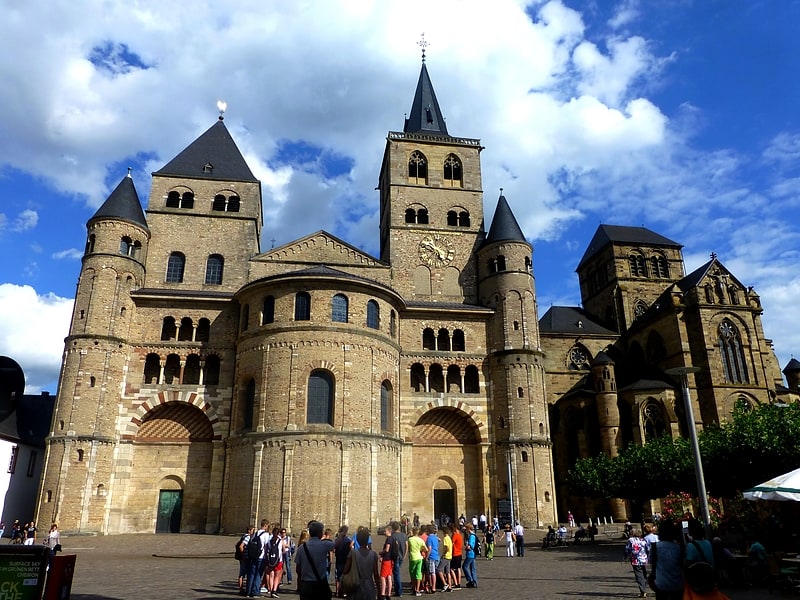
Catholic church in Trier, Germany. The Liebfrauenkirche in Trier, is, according to UNESCO, "the earliest church built in French High Gothic style outside France." It is designated as part of the Roman Monuments, Cathedral of St Peter and Church of Our Lady in Trier UNESCO World Heritage Site. The Trier Dom is next to it, and the two buildings share a common wall.[4]
Address: Liebfrauenstraße 2, 54290 Trier
Aula Palatina
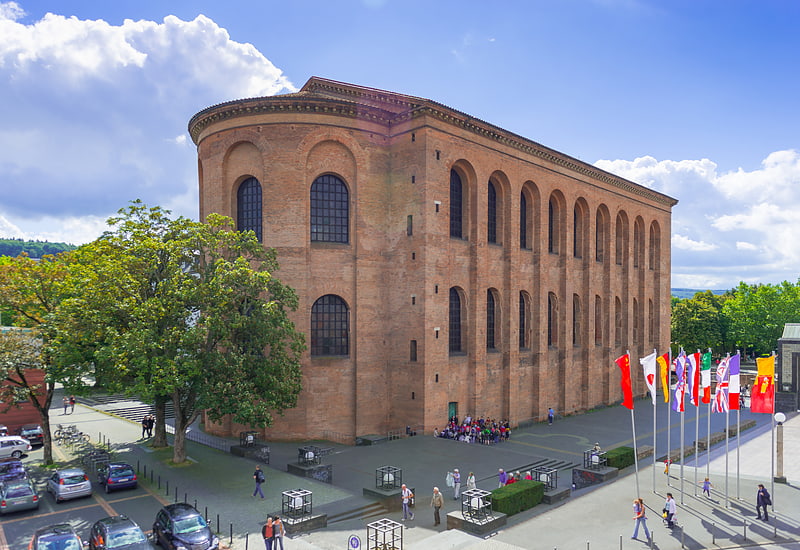
Also known as: Konstantinbasilika
Emperor Constantine's throne hall. The Aula Palatina, also called Basilica of Constantine, at Trier, Germany, is a Roman palace basilica that was commissioned by the emperor Constantine I at the beginning of the 4th century.
Today it is used as the Church of the Redeemer and owned by a congregation within the Evangelical Church in the Rhineland. The basilica contains the largest extant hall from antiquity (see List of ancient Greek and Roman roofs) and is ranked a World Heritage Site. The hall has a length of 67 m, a width of 26.05 m and a height of 33 m. It is designated as part of the Roman Monuments, Cathedral of St. Peter and Church of Our Lady in Trier UNESCO World Heritage Site.[5]
Address: Konstantinpl. 10, 54290 Trier
Amphitheater
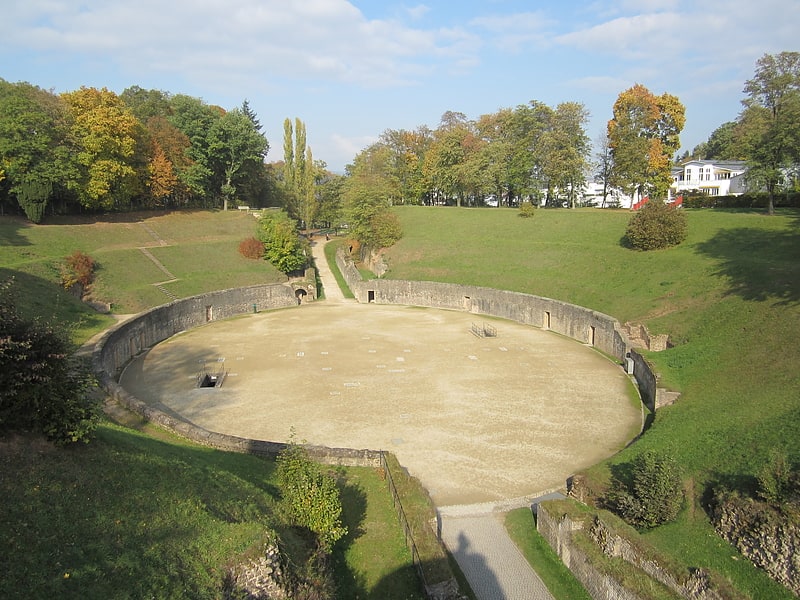
Historical landmark in Trier, Germany. The Trier Amphitheater is a Roman amphitheater in Trier, Germany. It is designated as part of the Roman Monuments, Cathedral of St. Peter and Church of Our Lady in Trier UNESCO World Heritage Site.[6]
Address: Olewiger Strasse, 54295 Trier
Stadtmuseum Simeonstift

Also known as: Simeonstift
The St. Simeon’s Collegiate Church was a collegiate church in Trier, Germany, near the Roman city gate of the Porta Nigra. Named after the Greek monk, St. Simeon of Trier, it is now a city museum in the former collegiate church’s buildings under the name, Stadtmuseum Simeonstift.
The church was created in 1037. In 1028 Simeon of Trier settled at the Porta Nigra as a hermit. He was supposed to have walled himself up there at the gate’s east tower. After his death on 1 June 1035, he was buried in his room on the ground floor. In the same year, probably for Christmas, he was canonized by Pope Benedict IX, in one of the first canonizations ever made by a Pope. In honor of the new saint, they built the Simeonstift and converted the former tower to a Doppelkirche. The Archbishop of Trier at that time, Poppo von Babenberg, personally had known the hermit and travelled with him. But a certificate of incorporation of the Simeonstift could not be obtained from him and it was probably never given. However, recent research showed that the church was founded soon after the canonization of Simeon.
The Simeonstift was a two-story cloister in four wings with a dormitory in the north wing and a refectory in the west wing. According to the dendrochronological findings, the north wing dates from 1040. The first reliable documentation is a document of 1048, which proves the existence of a provost’s office and therefore the existence of an collegiate church’s charter.
Emperor Henry IV in 1098 confirmed all his possessions to the Simeonstift and granted, namely, more than sixty properties and privileges to it.
The doppelkirche conversion of the Porta Nigra was reversed more than 750 years later, in 1804, by the order of Napoleon. Since then, the city gate has reverted almost to its original Gallo-Roman condition. Only the Romanesque east side of the choir still testifies from the outside to the fact that the Porta Nigra was once an imposing church.[7]
Address: Simeonstr. 60, 54290 Trier
Karl-Marx-Haus
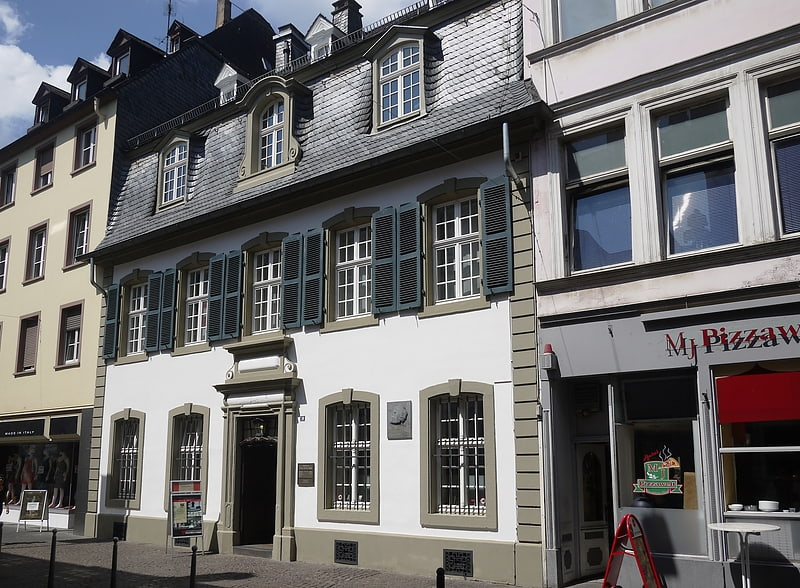
Museum of Karl Marx's life and work. The Karl Marx House museum is a writer's house museum in Trier. In 1818, Karl Marx, the father of Marxism, which influenced both modern socialism and communism, was born in the house. It is now a museum about Karl Marx's life and writings as well as the history of communism.[8]
Address: Brückenstraße 10, 54290 Trier
Trier Cathedral Treasury
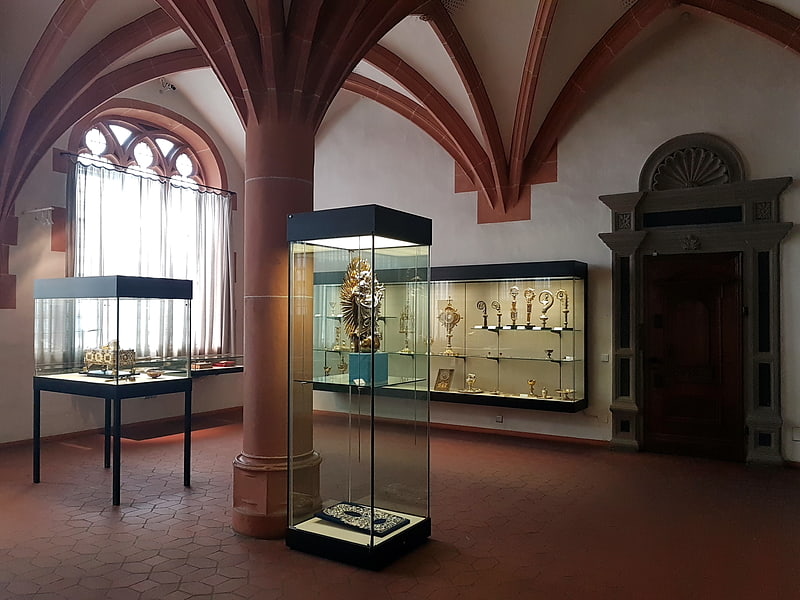
Museum in Trier. The Trier Cathedral Treasury is a museum of Christian art and medieval art in Trier, Germany. The museum is owned by the Roman Catholic Diocese of Trier and is located inside the Cathedral of Trier. It contains some of the church's most valuable relics, reliquaries, liturgical vessels, ivories, manuscripts and other artistic objects. The history of the Trier church treasure goes back at least 800 years. In spite of heavy losses during the period of the Coalition Wars, it is one of the richest cathedral treasuries in Germany. With the cathedral it forms part of a UNESCO World Heritage Site.[9]
Igeler Säule
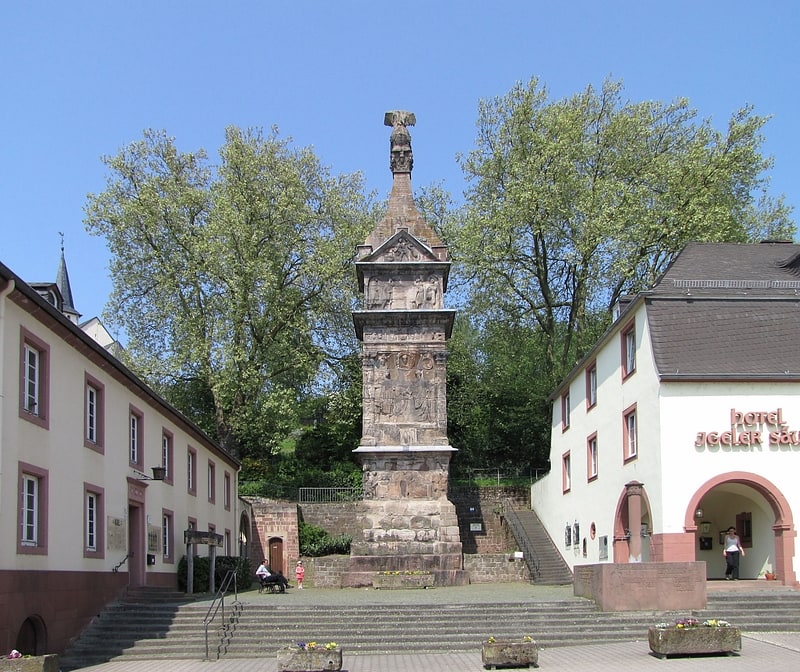
Historical landmark in Igel, Germany. The Igel Column is a multi-storeyed Roman sandstone column in the municipality of Igel, Trier, Germany, dated to c. 250 AD. The column is the burial monument of the Secundinii cloth merchant family.
Measuring 30 metres (98 ft) in height, it is crowned by the sculptural group of Jupiter and Ganymede. The column includes a four-stepped base, a relatively low podium, topped by a projecting cornice, a storey, its flat Corinthian pilasters with decorated shafts, supporting an architrave, a sculptured frieze and a heavy cornice. The bas-reliefs feature a procession of six coloni, bringing various donations to the house of their master. The coloni are received before the entrance to the atrium. The donations consist of a hare, two fish, a kid, an eel, a rooster and a basket of fruit.
The Igel Column is designated as part of the UNESCO World Heritage Site Roman Monuments, Cathedral of St. Peter and Church of Our Lady in Trier. It has been represented numerous times in paintings and drawings. A polychromed replica dominates the central courtyard of the Rheinisches Landesmuseum Trier.[10]
Address: Trierer Str., 54298 Igel
Barbara Baths

Also known as: Barbarathermen
Historical landmark in Trier, Germany. The Barbara Baths are a large Roman bath complex in Trier, Germany. It is the largest Roman bath north of the Alps. It is designated as part of the Roman Monuments, Cathedral of St. Peter and Church of Our Lady in Trier UNESCO World Heritage Site. For preservation, the baths are closed to visitors as of 2014.[11]
Address: L143 13-25, 54290 Trier
Rheinisches Landesmuseum Trier
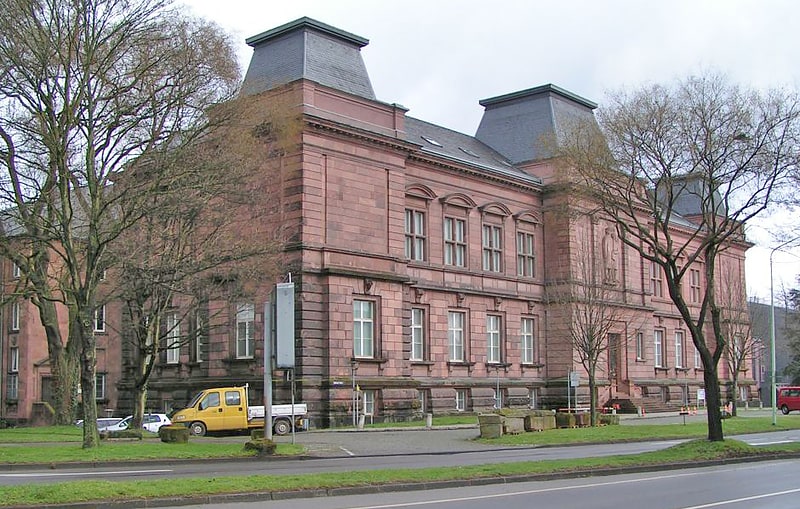
Museum in Trier, Germany. The Rheinische Landesmuseum Trier is an archaeological museum in Trier, Germany. The collection stretches from prehistory through the Roman period, the Middle Ages to the Baroque era with a strong emphasis on the Roman past of Augusta Treverorum, Germany's oldest city. Its collections of Roman sculptures, Roman mosaics and frescos are among the best in Germany.[12]
Address: Weimarer Allee 1, 54290 Trier
St. Matthias' Abbey
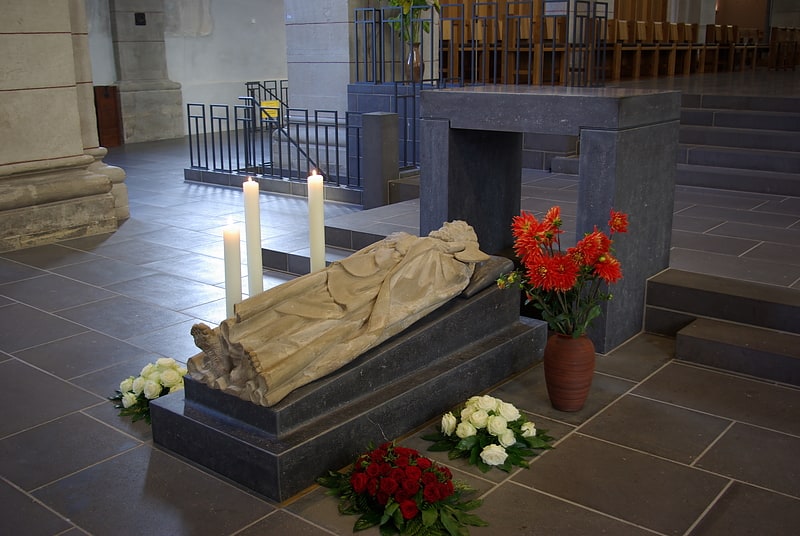
Also known as: Benediktinerabtei St. Matthias
Monastery in Trier, Germany. St. Matthias' Abbey is a Benedictine monastery in Trier, Rhineland-Palatinate, Germany.
The abbey church, a Romanesque basilica, is a renowned place of pilgrimage because of the tomb of Saint Matthias the Apostle, after whom the abbey is named, located here since the 12th century, and the only burial of an apostle in Germany and north of the Alps. The abbey was originally named after Saint Eucharius, first Bishop of Trier, whose tomb is in the crypt. The church has been given the status of a basilica minor.[13]
Address: Matthiasstr. 85, Trier
St. Paulin

Catholic church in Trier, Germany. Saint Paulinus is a Baroque church in the city of Trier, Germany. Constructed between 1734 and 1753, the interior was designed by Johann Balthasar Neumann. The ceiling of the nave features a painting by the artist Christoph Thomas Scheffler. The tomb of the saint after whom the church is named, Paulinus of Trier, is located in the church's crypt.
Based in Germany's oldest city with a significant Roman history, three church buildings have stood on the site since the 4th century.[14]
Address: 54 Thebäerstraße, 54292, Trier, Trier
Römerbrücke
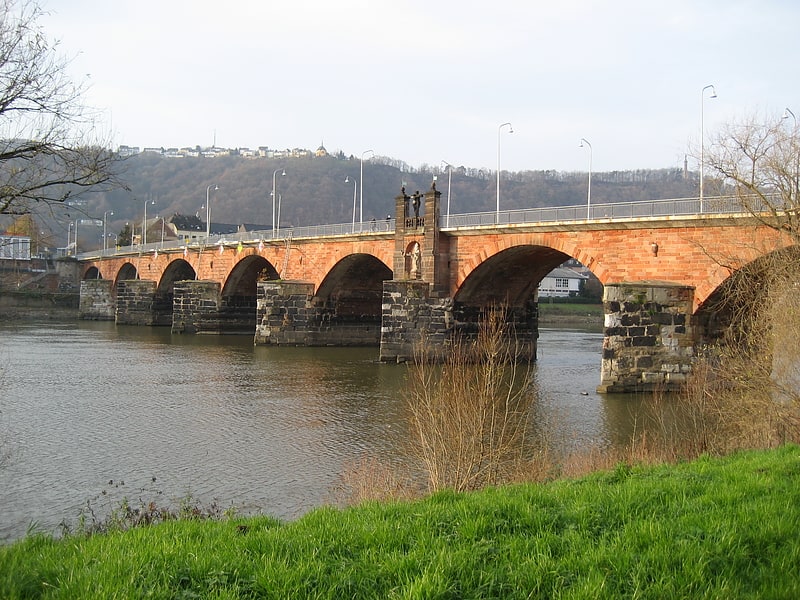
Bridge dating to the 2nd century. The Roman Bridge is an ancient structure in Trier, Germany, over the Moselle. It is the oldest standing bridge in the country. The nine bridge pillars date from the 2nd century AD. The upper part was renewed twice, in the early 12th and in the early 18th century, after suffering destruction in war. It is designated as part of the Roman Monuments, Cathedral of St. Peter and Church of Our Lady in Trier UNESCO World Heritage Site.[15]
Theater
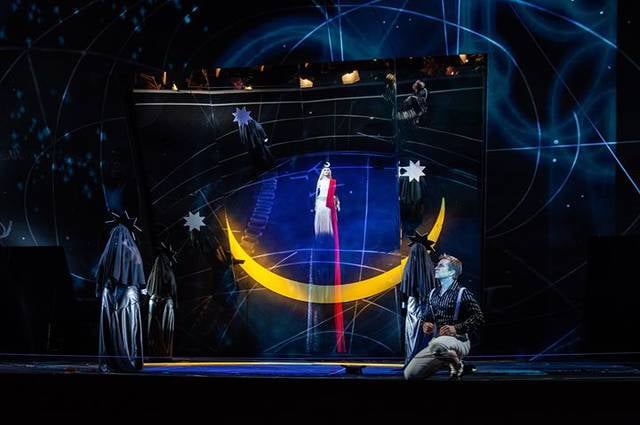
Theatre in Trier, Germany. The Theater Trier is the municipal theatre of Trier, Rhineland-Palatinate, offering opera and musical, dance and drama. The company dates back to 1802. The current house was completed in 1964, and needs renovation. The director since 2018 is Manfred Rolf Langner
Since 1995, the theatre has run a series of unknown operas, initiated by Heinz Lukas-Kindermann. It included world premieres such as Zemlinsky's Sarema, Die unendliche Geschichte by Siegfried Matthus, and Fausta by Heinz Heckmann, German premieres such as The Voyage by Philip Glass, and revivals of neglected repertoire such as Karl Goldmark's Merlin and Koanga by Frederick Delius.[16]
Address: Am Augustinerhof 3, 54290 Trier
St. Gangolf
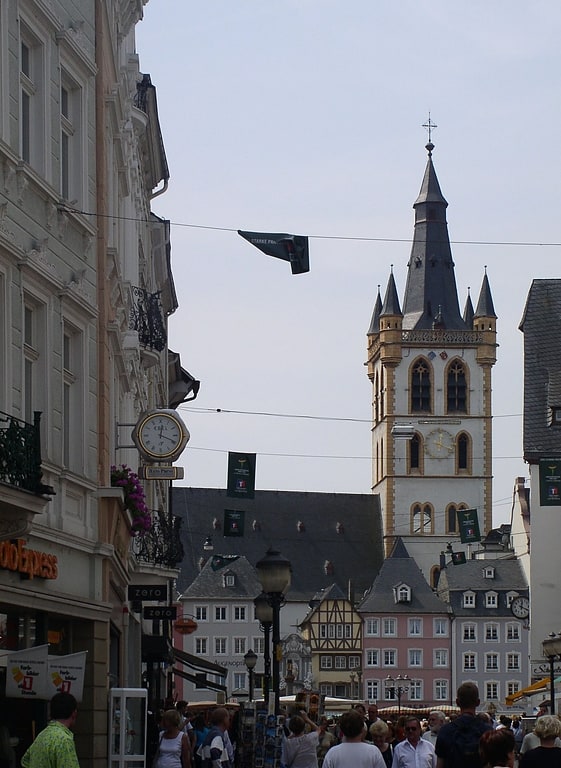
15th-century Roman Catholic church. St. Gangolf's Church is a Roman Catholic church in Trier, Germany. It is dedicated to St. Gangulphus. After Trier Cathedral, it is the second oldest church building in the city.[17]
Address: Grabenstraße 19, 54290 Trier
Forum Baths
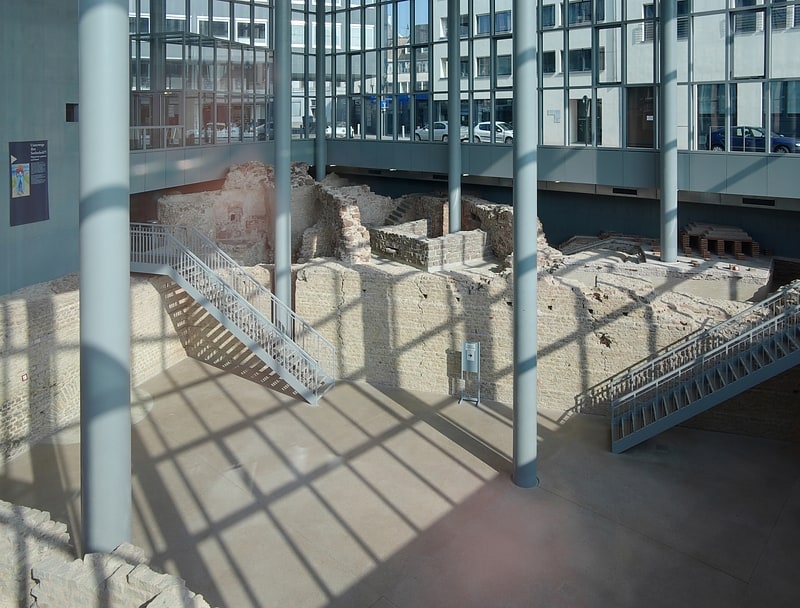
Also known as: Thermen am Viehmarkt
History museum in Trier, Germany. The Forum Baths of Trier are a ruin of a Roman bath complex in Trier, Germany. The baths were discovered in 1987.[18]
Address: At the Porta Nigra 5, 54290 Trier
Roman Monuments
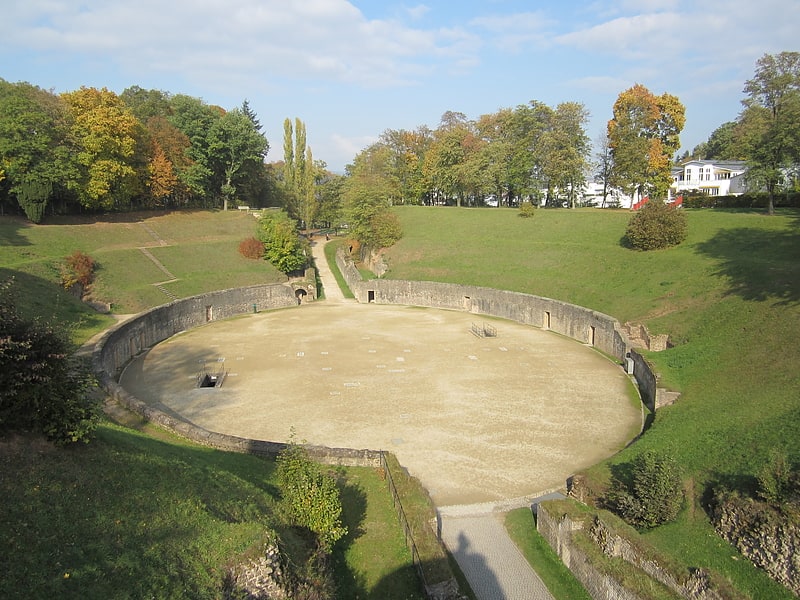
Also known as: Welterbe Römische Baudenkmäler, Dom und Liebfrauenkirche in Trier
The Roman Monuments, Cathedral of St. Peter and Church of Our Lady in Trier are heritage sites of particular importance in Trier, Germany, that were together listed as a UNESCO World Heritage Site in 1986.
From UNESCO/CLT/WHC:
"Trier is an example of a large Roman capital after the division of the empire. The remains of the Imperial Palace, in addition to the Aula Palatina and the Imperial Thermae, are impressive in their dimensions. The city bears exceptional testimony to Roman civilization owing to the density and the quality of the monuments preserved: the bridge, the remains of the fortified wall, thermae, amphitheatre, storehouses, etc. In particular, funerary art and the craftsmanship of potters, glassworkers, and moneyers flourished in the city."
In 2009, the site was featured on a golden 100-Euro coin.[19]
Kurfürstliches Palais

Historical place in Trier, Germany. The Electoral Palace in Trier, Germany, was the residence of the Archbishops and Electors of Trier from the 16th century until the late 18th century. It now houses various offices of the federal government and often hosts classical music concerts.[20]
Address: Willy-Brandt-Platz 3, 54290 Trier